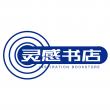
铁路轨道技术
正版保障 假一赔十 可开发票
¥ 12.2 3.2折 ¥ 38 全新
仅1件
广东广州
认证卖家担保交易快速发货售后保障
作者Juanjuan Ren[编著]
出版社西南交通大学出版社
ISBN9787564320263
出版时间2014-06
装帧平装
开本其他
定价38元
货号8265280
上书时间2024-09-08
- 最新上架
商品详情
- 品相描述:全新
- 商品描述
-
目录
1 The Track Structure
1.1 General information
1.2 Rail
1.3 Sleepers
1.4 Joining of Rails
1.5 RaiIFastenings
1.6 Ballast and Ballastbed
2 Track Geometry
2.1 Generallnformation
2.2 Running Gear of Rolling Stocks
2.3 Track Geometry Elements
2.4 Gauge Widening on Curved Tracks
2.5 Superelevation on Curved Tracks
2.6 EasementCurve orTransition Spiral
3 MechanicaIAnalysis of Track
3.1 Introduction
3.2 Force Acting on the Track
3.3 Static Calculations of Track Under Virtual Loads—theory of Beams
on Continuous Elastic Foundations
4 Wheel—raillnterface
4.1 Wheel—railguidance
4.2 Wheelset and Track Dimensions
4.3 Conicity
4.4 Lateral Movement of a Wheelset on Straight Track
4.5 EquivalentConicity
4.6 Worn Wheel Profiles
4.7 Wheel rail Contact Stresses
4.8 Train Resistances
5 The Slab Track
5.1 Requirements of Slab Track
5.2 Inserted Design Types on Support Points with Sleeper
5.3 Laid—on Design
5.4 Monolithic Designs on Supporting Points without Sleeper
5.5 Pre—fabricated Designs on Supporting Points without Sleeper
5.6 Sleepers or Blocks Embedded in Concrete
5.7 Structures with Asphalt—concrete Roadbed
5.8 The Rail Fastening
5.9 The Calculation Method
6 The Switches
6.1 Summary
6.2 The Standard Turnout
6.3 Geometry of the Turnout
6.4 Types ofTurnouts and Crossings
6.5 Elements of Switches
6.6 Speed Through Tumout and Means of Increasing it
6.7 Laying and MaintananceofTumout
7 Continuously Welded Rail Track(CWR Track)
7.1 General Information
7.2 Fundamental Principles
7.3 Stability of CWR Track
7.4 Design of CWR Tracks
7.5 CWR track on Bridges
8 Track Maintenance and Repair
8.1 Inspection of Track Geometry
8.2 Fundamental Principles for Maintenance Work
8.3 Regular Maintenance of Track
8.4 Arrangements of Curtailed Rails on Curved Tracks
8.5 String Lining of Curves
8.6 Capital Repair of Tracks
References
— 没有更多了 —












以下为对购买帮助不大的评价